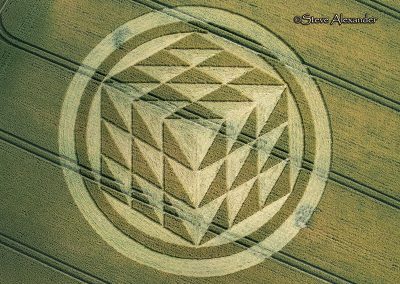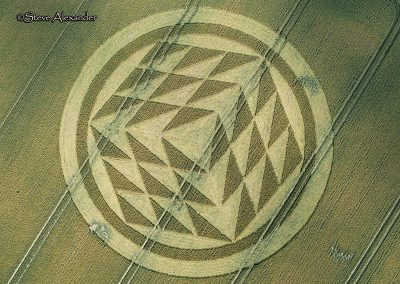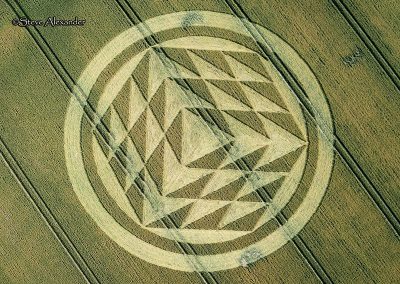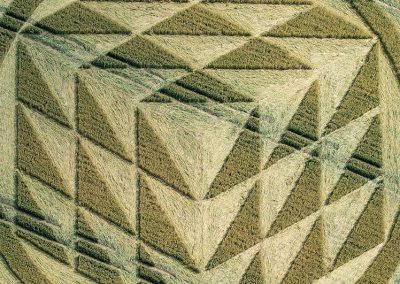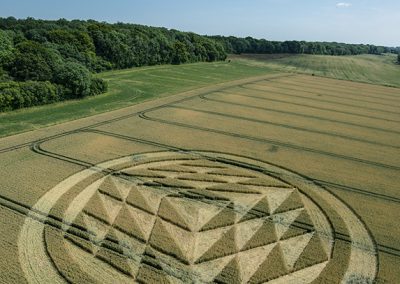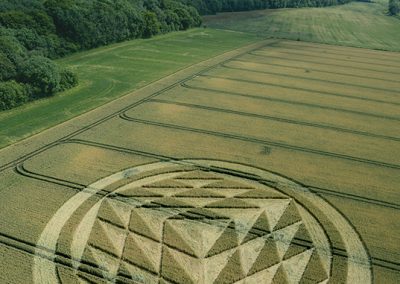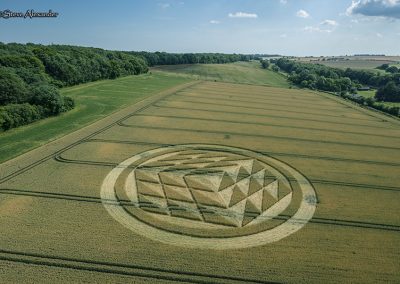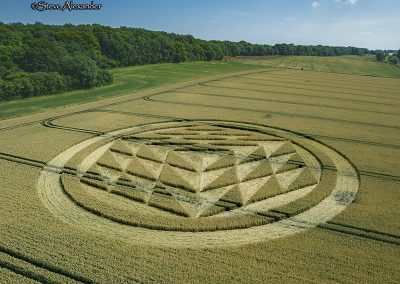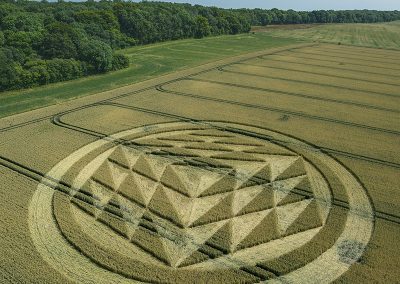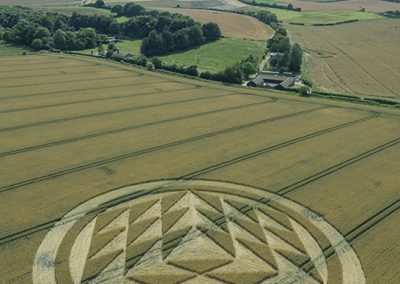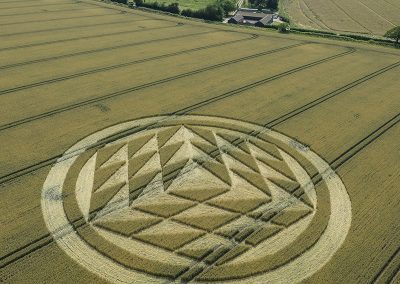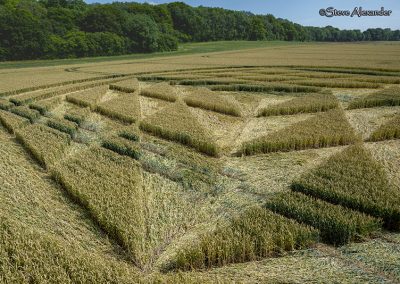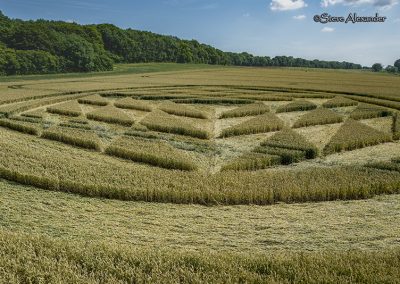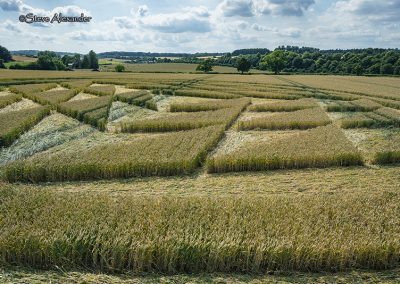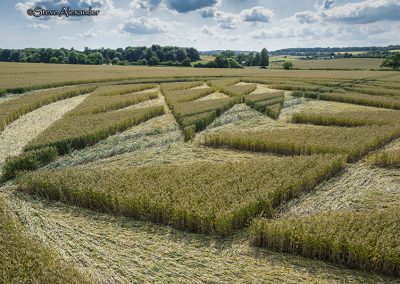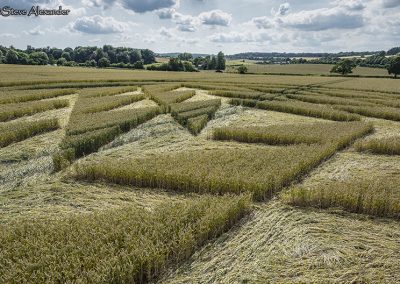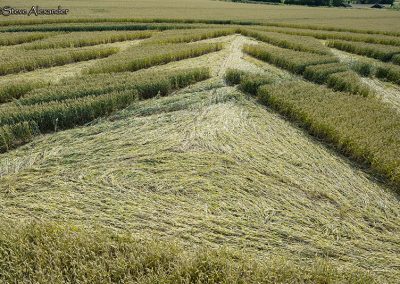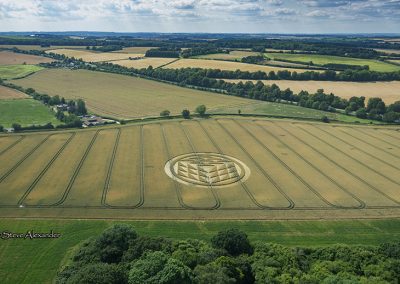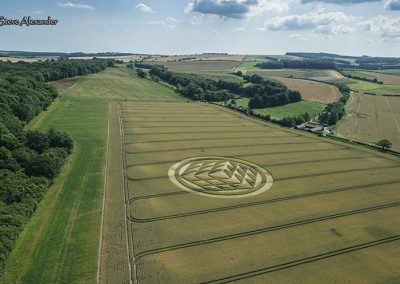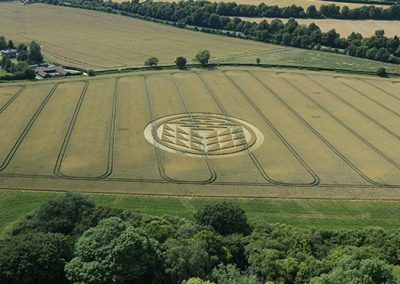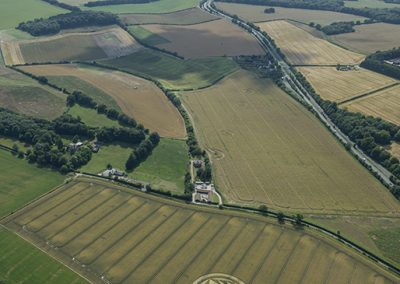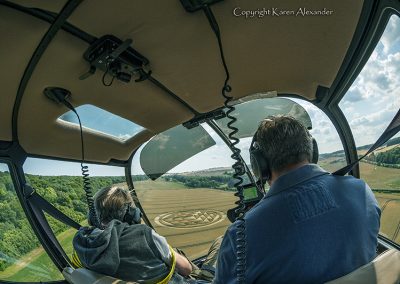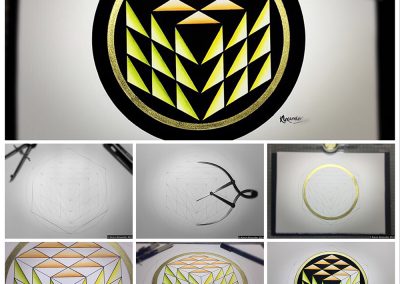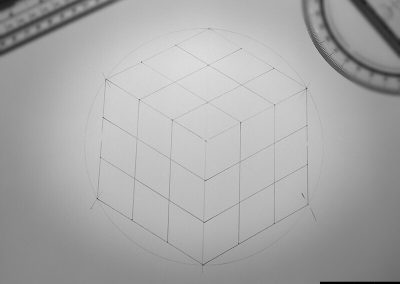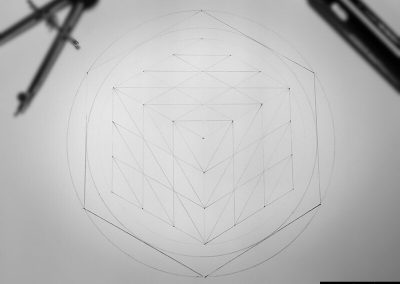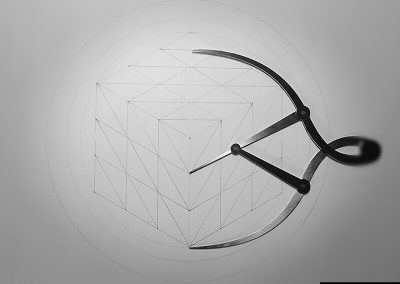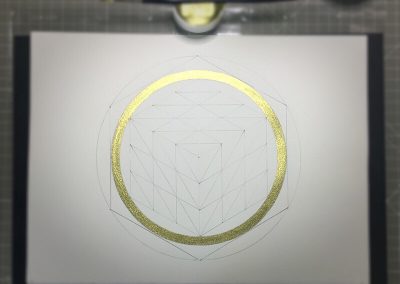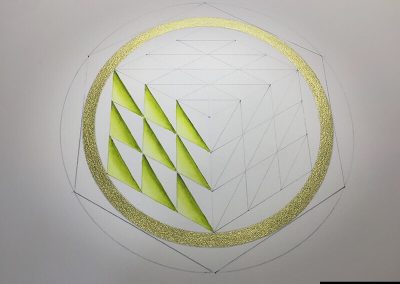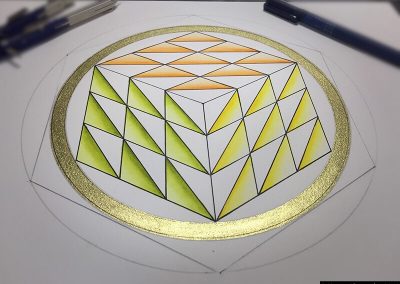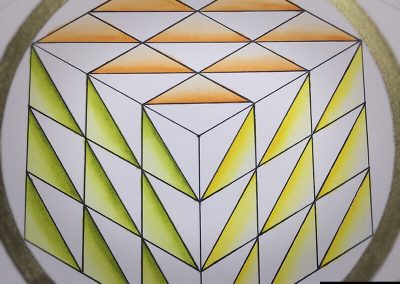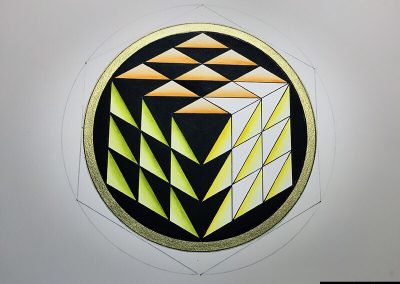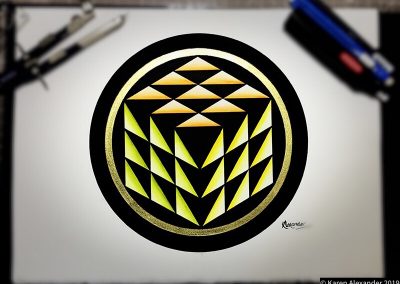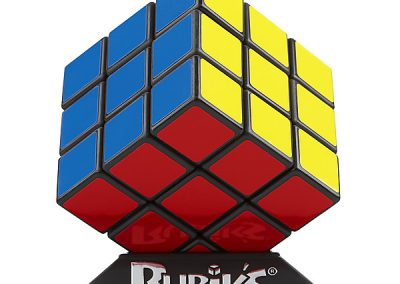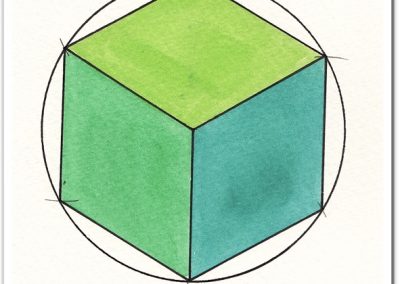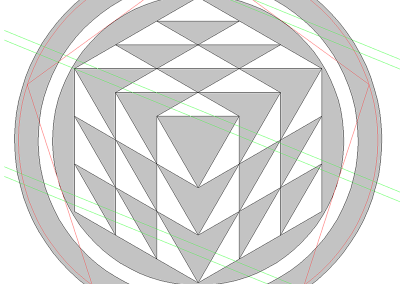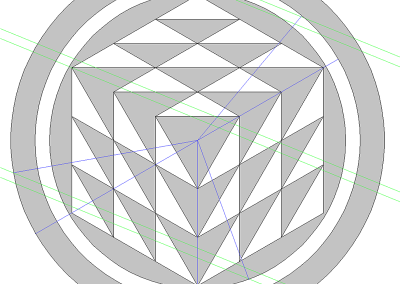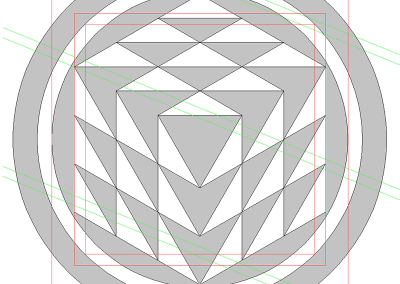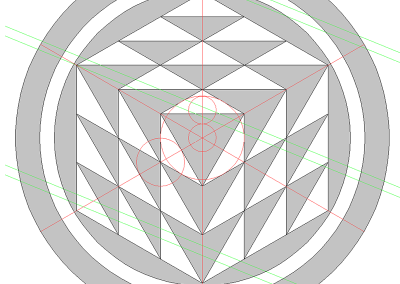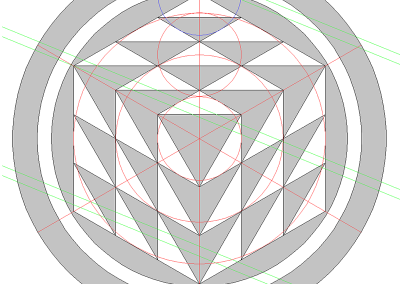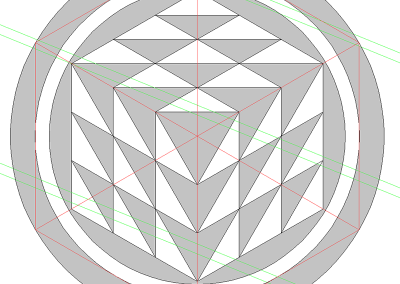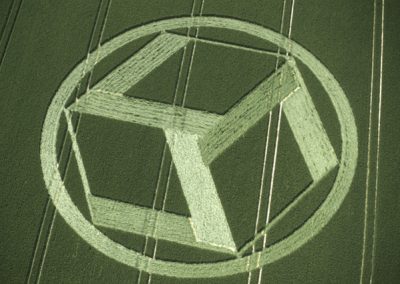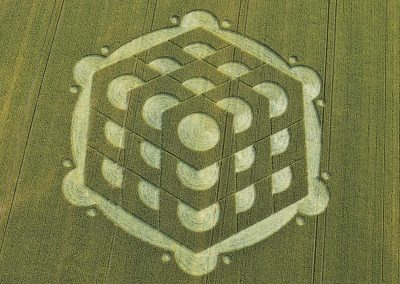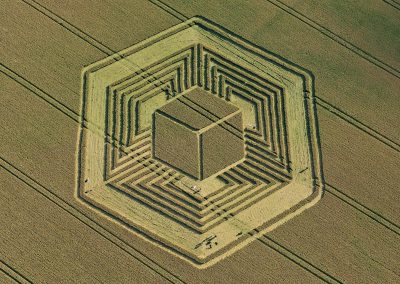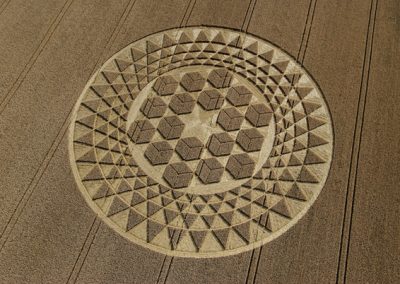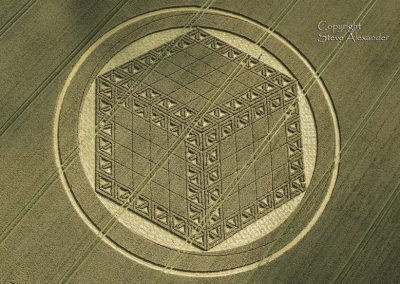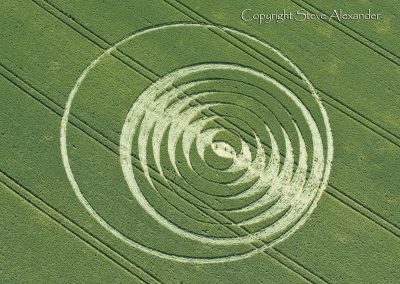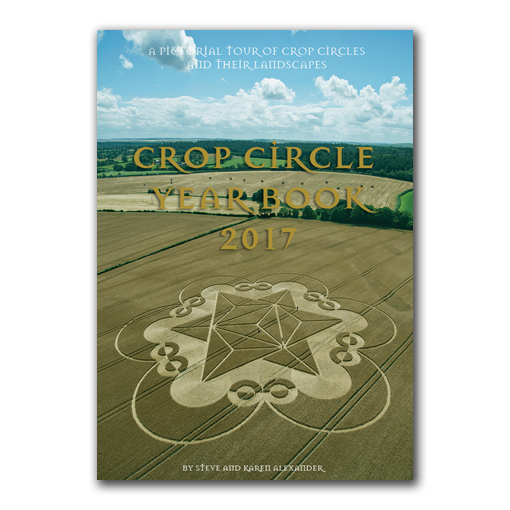Fulley Wood, nr. Tichborne, Hants.
(nr Rodfield Lane)
Detail: This circle was reported on the 16th of July and is in a field of ripening wheat. It measures approximately 200ft in diameter.
Visiting: This crop circle has now been harvested. At the time of writing we have no information about access to this circle. You will need the express permission of the farmer/landowner before visiting. Please assume no permission has been given. You will need to seek consent before entering this field.
Location: Fully Wood is very close to the village of Titchborne in Hampshire and there have been circles before at this location, the last one in 2016 – read on for more information.
History & Connections: There have been circles in this area of Hampshire for many years. The last one being on the 24th June 2016 – click here for link to information and pictures of that circle. Tichborne is close to New Alresford, Cheriton and Headbourne Worthy – all previous crop circle sites. This entire area of Hampshire has a rich and longstanding relationship with the crop circle phenomenon.
The Curious Tale of the Tichborne Dole: Nearby Tichborne is famous for its annual ‘Dole’ in which flour is given out to local residents as an act of charity. It has its origins in the 1100s and is a fascinating bit of local folklore…
(extract from alresfordmemores.com website)
The origins are said to be from around 1180, when Lady Mabella was married to Sir Roger Tichborne: in the 12th Century, Lady Day was the official first day of the next year. Sir Roger was not known for his benevolence. Lady Mabella lay on her deathbed: she was concerned that after her death the poor of the Tichborne village would no longer receive her donations. So she suggested to Sir Roger that he would honour her bequest, that the poor and needy would receive a gallon of flour, annually in the future, after she had died. He was not so sure, so he took a burning firebrand from the fire, and said “The flour from all the land Lady Marbella can crawl round before this brand dies out will be the source of this bequest!”
Please use the link above to read the full story, which includes a curse and a family prophecy! There is also a beautiful painting of the Dole by Flemish artist Giles Tilburg which can also be seen at the link above.
Design & Symbolism: The main part of the design of this crop circle is hexagonal – a large hexagonal shape sits within a standing ring of crop. However, there can be little doubt that it intends to convey a 3 x 3 (3-D) cube.
Each of the cube faces (that we can see) are divided diagonally to create two triangles on each face, one standing, one flattened. There are 27 cubes in this design. We can only see 21, the other six are implied – as they face away from us. We can see 54 triangles – 27 standing – 27 flattened. There are 18 on each face (9 standing, 9 flattened) A cube has 6 faces in total 6 x 18 = 108 – so we would see a total of 108 triangles if we could see all the faces.
If you’re having difficulty imagining this, think of the Rubik’s Cube, the ubiquitous puzzle toy of the 1980s – the cube count is exactly the same.
The cube is one of the five so-called Platonic Solids. A Platonic solid is a regular, convex polyhedron. This means that all its faces, are of equal shape and as are angles to one another. There just five possible in 3D space. There are many fascinating correspondences to be drawn from these shapes, one of which is how they relate to time.
Each face of the cube is a square, each angle of the square is 90 degrees, therefore each face has 4 x 90 degree angles which equals 360, times this by six faces and we have 2160. This is the number of years it takes to travel from one sign of the zodiac to another – in other words 1/12 of a great zodiacal year. The other 4 platonic solids have similar kinds of links to time.
The correspondences between form, structure and time are fascinating because they go back to the idea that there is something deeply harmonious about the material world – in that they often correspond and that there seems to be an order of meaning here, not just description.
The working numbers in this formation are then: One (circle) unity and wholeness, three (the triangle) the bridge, pivot or catalyst, and six (hexagon), structure and function. And by implication four (cube) matter and substance.
On a deeper note, I am always drawn to circles which contain or imply the cube. The development of the cube in crop circle history has been a very interesting one. The first 3D shape to appear as a crop circle was at Allington in Wiltshire in 1999. We’ll take a look at some other cube formations in the Geometry Gallery when I’ve completed my drawing of this formation. Stay tuned!
See Geometry Gallery below for more analysis as we have it.
Visiting the Circles? If you are thinking of visiting any crop circles this summer, please read our Visiting the Crop Circles section. It’s full of useful information and etiquette for visiting the countryside and the crop circles. Please remember that you should not enter any fields without the express permission of the farmer.
Click here for Copyright Information about the reproduction of images on this website.
Please Help to keep us Flying in 2019: If you have enjoyed looking at our pictures and information please consider making a small donation to keep us flying. There are so few of us left regularly recording the circles it’s really important that we continue. And while some now use drones to record the circles, it is important that there are still images taken from aircraft where the best quality camera equipment can be used and images that include the broad vista of the landscape can be taken. This kind of photography is expensive and it gets harder with each passing year to raise the funds we need to continue our work, but if everyone who regularly looked at this website made a small donation we would meet the funds we need. You can make a donation here.
NOTE: Some of the images below are beautiful landscape scenes. Click on each image to enlarge them and see the whole picture.
Image Licencing
We can supply high resolution images of many of our photographs and the sky is the limit as to what they can be used for! Choose from our extensive library or contact us to commission aerial photography for your project.
Geometry Gallery
Drawing The Fulley Wood Crop Circle.
It is to both my amusement and utter bewilderment that I hear I have been credited with designing this crop circle – and further was apparently disappointed at the way the cube had turned out??? I think the blistering summer heat must definitely be getting to some people – time to break out the Kool-Aid I think!
You can see on the gallery below images from the various stages of my drawing of this crop circle. My drawing began with construction the central cube motif. As mentioned elsewhere the cube is a shape we have seen many times before in crop circle design. I always pay attention to to the cube when it appears as I consider it one of the central icons of the crop circle phenomenon – more of this later.
Isometric projection is a method for visually representing three-dimensional objects in two dimensions in technical and engineering drawings. It is an axonometric projection in which the three coordinate axes appear equally foreshortened and the angle between any two of them is 120 degrees.
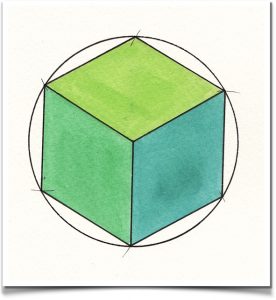
Fig 1. A cube drawn in a hexagon – K. Alexander.
The cube when it appears in crop circle design, is almost always in Isometric Projection. This means that the cube can be drawn within a hexagon as shown in Fig 1. According to Phoebe McNaughton in her 2007 book ‘Perspective and other Illusions’, Isometric Projection was developed during the Industrial Revolution of the 1800s to help with the drawing of plans for buildings, machinery and everything in-between. So much a part of our collective perspective has this become, that when looking at a cube drawn this way we automatically see the cube rather than a hexagon divided into three. In some ways this lends itself to the function of both the numbers six and four. Six being the number of structure, order and function and four being the number of matter, substance and material reality.
The cube in the Fulley Wood formation was then further split into three along each vertex to create a 3 x 3 cube. Each cube is then further split into two – diagonally. Not only does this look incredibly beautiful, it also creates the possibility for a Phi proportion in the cube (see the gallery below). With out this splitting of each cube, the Phi proportion is not possible.
Finally, there is a standing ring around the cube, followed by a flattened ring that encompasses the whole formation. This seems to contain the circle and present it as a whole design – a complete statement.
Note the space around each component within the cube. This allows for visitors to walk around this circle with out having to trample down any further crop – an important design feature of many crop circles. This tells us something important about the phenomenon; one that it is cognisant of the damage the circles cause and wishes to minimise any further damage, and secondly, that they are an an invitation to participate.
Deeper into the Cube
Let me begin by saying that I do not subscribe to the ‘Black Cube conspiracy theory’, or any cube conspiracy come to that. The cube black or otherwise, is not evil, nefarious or any such thing. It’s symbolism lies in the ideas of of the material world, matter, substance and foundation. Perhaps most importantly it can be found in the dimensions of sacred sanctuaries in many religions.
In Revelation Chapter 21, the new Jerusalem is described as a perfect cube: “The plan of the city is perfectly square, its length the same as its breadth.” Also, the room known as the Holy of Holies in the Temple of Jerusalem was constructed in the shape of a cube. In the center of the room was the Ark of the Covenant that contained the Scroll of the Law. [Link]
The cube can also be found in the design of the most holy Kaaba in Mecca. For freemasons, the cube symbolises ‘matter perfected’ or its reflection, the ‘soul perfected’. Hewn from the rough stone presented to every new initiate, when perfected it then becomes the foundation stone of the temple, as perfected-souls become the foundation of the new age.
Seen in this context the cube becomes the icon of a new and better world, a world spiritualised, in which matter becomes ‘minded’. Thinking back to the formation at Farley Mount this year, which showed us an interference pattern which could be interpreted as another reference to the way in which matter (the photon) becomes ‘minded’ or subject to consciousness during the double slit experiment. This cube at Fulley Wood could be said to speak of the same thing but from a different perspective – that being the link between mind and matter. Now you can see why the cube and its many different expressions as part of the crop circle phenomenon is of particular interest.
Back to Number
This crop circle is a 3 x 3 cube – giving us nine cubes on each face. Nine is the ‘almost perfect’ number, the number of ‘threshold’. To me this formation absoluetly puts us on the edge of the liminal – a place where matter is minded and mind matters. The in-between place. We may not yet realise we inhabit this miraculous reality, but indeed we do and perhaps the crop circles play a role in the world in bringing it out of the deep unconscious into the bright light of consciousness – to inspire us and assist us in birthing a new vision of reality.
Notes:
Past circles at Fulley Wood: You will find images of the last circle to appear hers in 2016 in the picture gallery below.
Further Geometry: There are also a set of analyses by geometer Peter van den Burg in the gallery – Peter was able to show further fascinating correspondences.
Thanks/Credits:
Text | Hand-drawn Images by Karen Alexander.
With special thanks to Peter van den Burg for his additional diagrams and analyses below. You can see more of his great work on his Facebook page Geometry of the crop circles.
Peter’s Commentary on his images in the gallery
I quickly found out that the outer ring was based on the in- and external radius of a hexagon. Just as the central part is obviously hexagonal. The difficulty was to find out how they relate. They didn’t seem harmonious. The inner radius of the hexagon containing the central triangle helped out. Placing it on top of the central hexagon determined the outer ring. The standing ring was found using the distance between the paralell lines, and 1/3 of the internal radius of the innermost hexagon.
The result is a nice sett of aproximately squared circles that binds the two elements together.
What has been an integral part of crop circle design, but rarely is pointed out, is Trisection of an angle. Trisection of a regular polygon is no difficulty. But it is not possible to trisect àny given angle, and was considered one of the insolvable problems in ancient times (the others being a squared circle, and doubling the volume of a cube). In this case, the formation is hexagonal. The internal angle of a hexagon is 60°. Trisection will give a 20° angle. If we turn 20° from any of the vertices of the hexagonal template, change is you’ll find a tramline crossing the formation there. Not allways, not with every vertice, but this occurs too often to be disgarded as coincidence i believe. Here, every one of the three rings surrounding the formation is trisected. This becomes extra special because the three sets of tramlines crossing the formation are not equally spaced. The one on top is slightly closer to the central one compared to the lower one. It shows what care is taken to place a crop circle, and how the design is connected to the location. As if it was designed on the spot.
Apropos doubling the volume of a cube. The formation subtlety gives a solution to that one too. If the side of the hexagon is conscidered the side of a cube, which the formation seems to aim at, we can calculate a circle with the radius equal to a cube with double volume. This circle will fall just inside the formation but doesn’t seem to be related, until a pentagon is placed inside, and will fit the inner ring.
Further Reading:
Perspective and other Illusions by Phoebe McNaughton. Wooden Books 2007/2009 ISBN: 978-1904263-61-6


